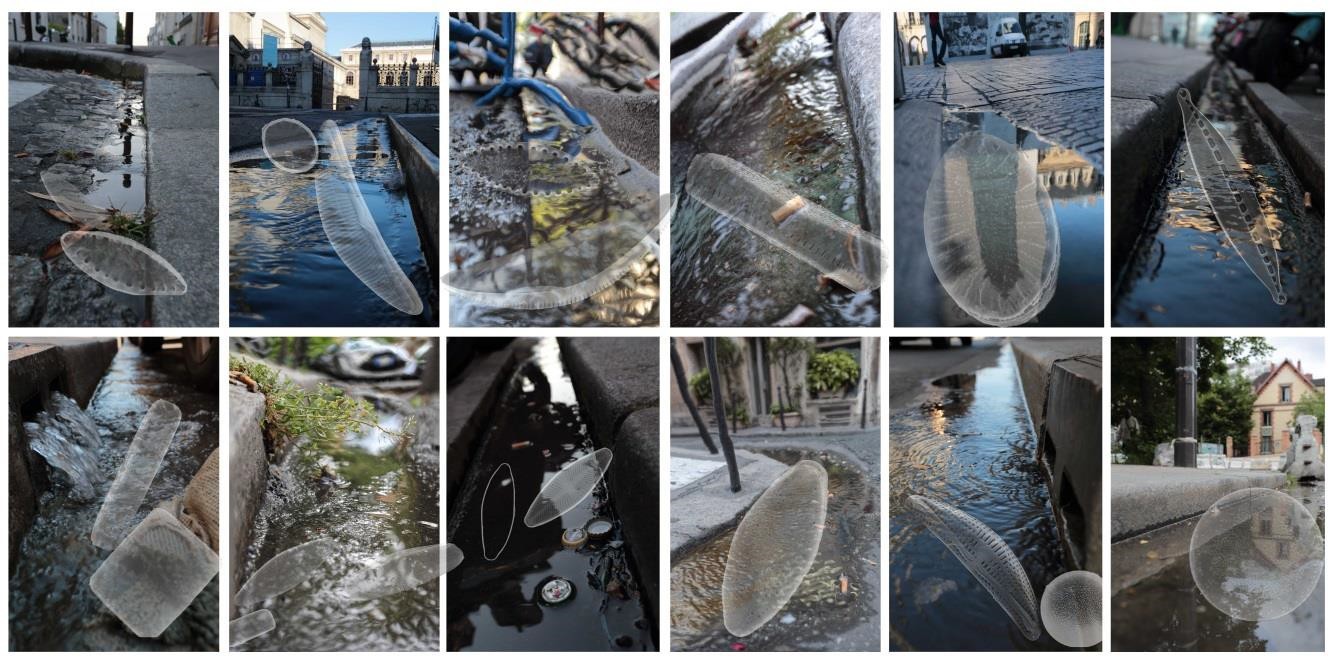
Gutters teem with inconspicuous life
Scientists from the BOREA Biology of Aquatic Organisms and Ecosystems research unit (CNRS / MNHN / IRD / UPMC / University of Caen / Université des Antilles)—together with a colleague from the Max Planck Institute for Terrestrial Microbiology in Marburg, Germany—have shown that Parisian street gutters are oases of microscopic life, home to microalgae, fungi, sponges, and mollusks.1 Grouped into communities, these microorganisms may help clean rainwater and urban waste by decomposing solid debris and pollutants such as exhaust fumes and engine oil. A deeper understanding of the role and composition of these communities could help elucidate the services rendered by gutter ecosystems. Published in the ISME Journal on October 13, 2017, the researchers' findings are the first to reveal the unsuspected biodiversity of microscopic life in Paris city streets.
- 1This study was conducted within the scope of a CNRS PEPS (Pluridisciplinary Exploratory Projects) scheme.
Scientists from the BOREA research unit first suspected the presence of microalgae in Paris streets after noting the characteristic green or brown color of gutter water and observing the presence of bubbles, which are the result of photosynthetic activity. The researchers analyzed different samples of non-potable water from the Seine, the Ourcq Canal, curbside water outlets (for street cleaning), and street gutters to identify the microorganisms they harbored.2
The team identified 6,900 potential species3
of eukaryotes4
in the hundred or so samples of water and biofilms (consisting of communities of microorganisms) collected from every district of Paris. Diatomaceous microalgae make up a large part of this biodiversity. Also identified were other unicellular eukaryotes (i.e., amoebas, alveolates, and Rhizaria), fungi (including some known decomposers), sponges, and mollusks. Even more astonishingly, analyses revealed that nearly 70% of these species were not found in the non-potable water sources. The profiles of these microbiological communities vary greatly between sampling sites, suggesting their origin may be associated with human activities or that the microorganisms have adapted to their specific urban environment.
Hence, street gutters and the microscopic life they host appear to constitute a unique ecosystem with ecological roles still to be discovered. What are these microorganisms exactly? What do they do? Do they help clean wastewater, like tiny roadside treatment plants? How did they adapt to city life? Should they be monitored? These are all questions the researchers hope to answer by studying other kinds of life—such as prokaryotes, organisms devoid of cell nuclei, like bacteria —over longer periods of time, and even in different cities.

Diatoms and Paris street gutters.
Other visuals are available : http://phototheque.cnrs.fr/p/491-1-1-0/
- 2In Paris, non-potable water—for street cleaning or other purposes—is pumped from three stations (two drawing water from the Seine and the third from the Ourcq Canal). This water is stored in seven reservoirs before being distributed to the gutter network.
- 3The microorganisms were specifically categorized by operational taxonomic unit (OTU). Each OTU groups together individuals having close phylogenetic relationships.
- 4Eukaryotes are uni- or multicellular organisms with cell nuclei and organelles, unlike bacteria and archaea.
Aquatic urban ecology at the scale of a capital: community structure and interactions in street gutters. Hervé V, Leroy B, Da Silva Pires A, Lopez PJ. ISME J. 2017 October 13. View web site


